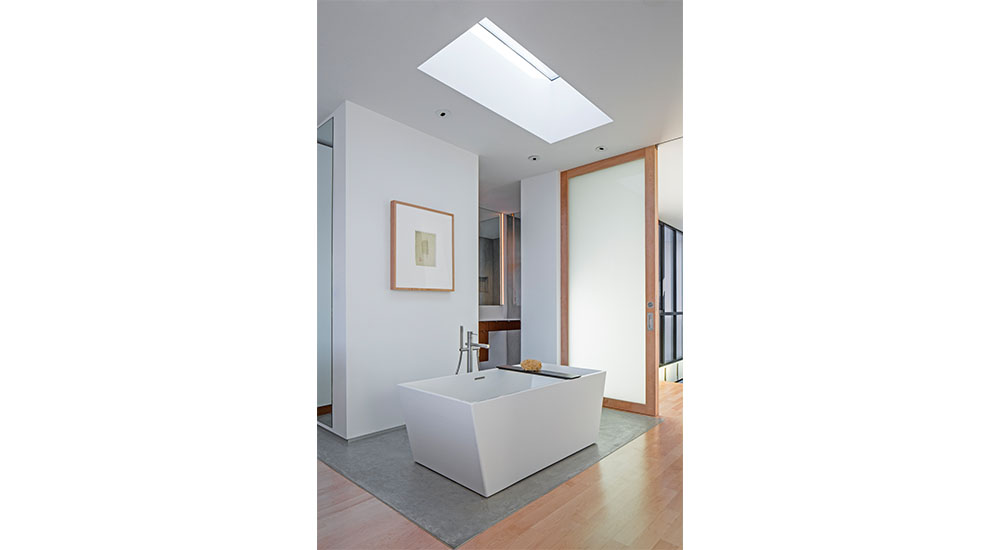The spa bathroom is common sense. Not to sound lofty, but in classical times “common sense” was defined as something that was perceptible by all the senses: touch, sight, smell and hearing. Checking all those boxes is the element of water – the key element in spa bathrooms.
Above: Architect Tryggvi Thorsteinsson, AIA, co-founder and principal of Minarc, prioritizes designing around how people feel in spaces. He said, “That often means carving out a specific zone for the tub that is surrounded by natural materials, oriented to capture natural light, or even partially open to the outdoors when privacy allows.” Photo: Art Gray Photography
Caleb Anderson, a member of the NKBA Design Council, said, “Water is nature’s unifying element. It constitutes 60% of our own body. Anyone who has ever been to the ocean has felt its healing and restorative essence. So, as design continues to deepen the connection to nature and the outside world in our interior spaces, design thinking around water will evolve in big ways in our bathrooms.”
Tubs
The evolution of spa-featured bathtubs in residential environments reflects an ongoing pursuit of wellness at home, with contemporary models integrating sophisticated materials and advanced hydrotherapeutic functions. For professional designers specifying luxury bath experiences, understanding fabrication nuances and the range of spa amenities is paramount to curating high-end, restorative spaces.
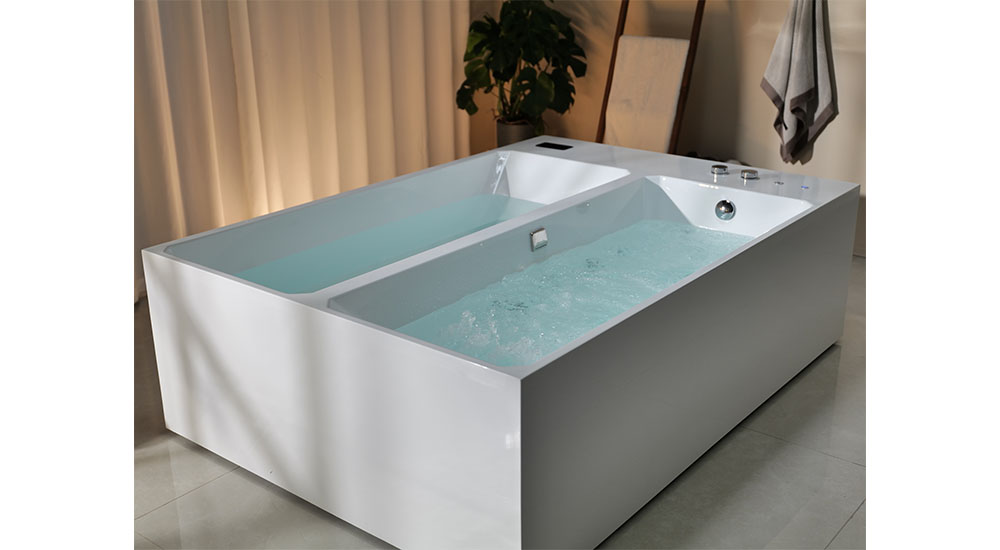
The Hot/Cold Indoor Plunge Tub from EMPAVA makes contrast therapy convenient by coupling two 18-inch-deep basins, one offering a 113ºF hot soak and the other a 37.4ºF cold plunge, within a single unit. empava.com
Material selection remains central to both performance and aesthetics. Cast acrylic continues to dominate the market for its exceptional durability, warm-to-the-touch finish and a high degree of formability, which allows tubs to assume complex contours and minimalist profiles with ease. Designers seeking a premium tactile experience increasingly specify solid surface composites, such as engineered stone and proprietary resin blends, materials that offer a seamless appearance, superior thermal retention and resilience against staining. High-gauge stainless steel, while less common, offers a sleek, modern aesthetic and unmatched longevity, ideal for projects that prioritize sustainability and industrial design cues. For ultra-exclusive commissions, natural stone and copper are also in play, delivering bespoke visual drama and artisanal value.
Beyond materiality, the functionality of today’s bathtubs has progressed markedly. Hydrotherapy jets, both air and water, are now more discreet and customizable, supporting targeted muscle relief and full-body relaxation. Chromotherapy lighting systems – integrated within the tub shell or via exterior luminaires – enable mood modulation, aligning with circadian wellness principles. Heated backrests and ergonomic contouring further elevate user comfort, while silent ozone filtration and aromatherapy infusion capabilities address hygiene and multisensory engagement.
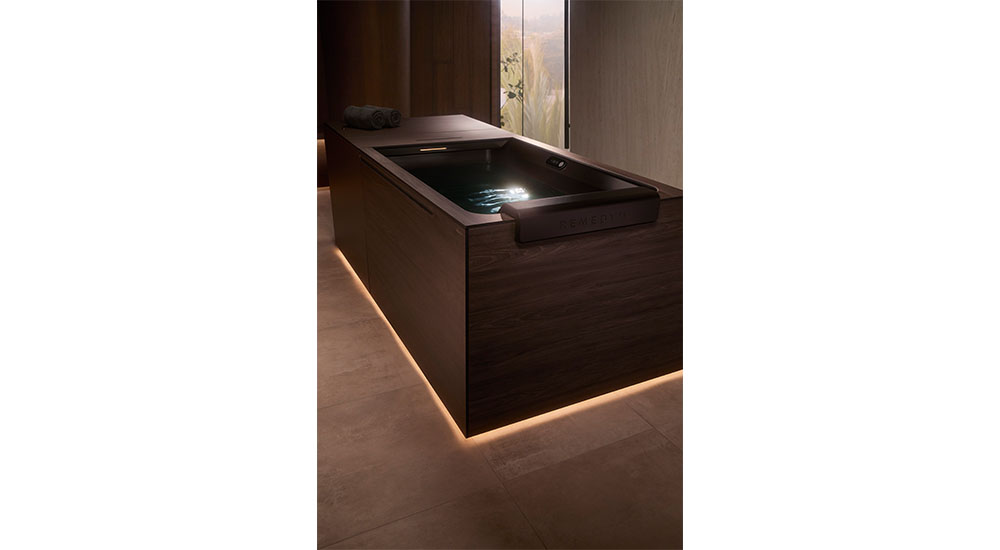
With precision temperature control, ergo-dynamic body positioning, a state-of-the-art UV-powered filtration system and an integrated light to help guide breathwork, the KOHLER x Remedy Place Ice Bath delivers a distinctive cold therapy experience. kohler.com
In addition to traditional warm-water spa tubs, cold-plunge tubs are now emerging as a coveted feature in residential wellness suites. They are designed to maintain low water temperatures, typically between 50-60°F, which can improve circulation and reduce inflammation. Designers must account for advanced chilling systems, insulation and precise temperature controls when specifying these tubs to ensure seamless integration into the spa bath space.
Showers
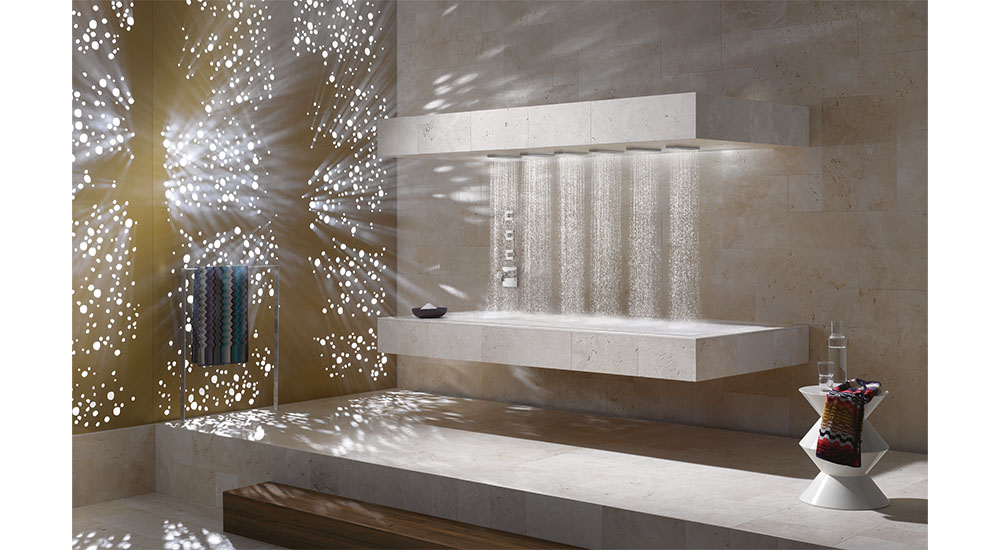
DORNBRACHT’s interpretation of a Vichy shower, the Horizontal Shower, has six water bars that are recessed above a platform where the bather reclines. The prone position encourages full relaxation. dornbracht.com
Showers are central to the home spa experience. Far beyond the standard showerhead, modern spa showers offer a range of features that cater to wellness, comfort and ease of use. Among these:
Adjustable Flow Settings. Today’s showerheads offer settings from gentle rain to invigorating massage. Rainfall settings envelop the body in soothing droplets, perfect for relaxation, while powerful streams energize and awaken. The ability to customize the water pressure and flow provides a tailored experience for every mood and need.
Hand Showers. Flexible and user-friendly, hand showers make it easier to direct water exactly where it’s needed, aiding in targeted muscle relief or gentle rinsing. They are ideal for accessibility, cleaning and adding a dynamic element to the shower routine.
Body Jets. Strategically placed along the shower walls, body jets deliver streams of water that massage tired muscles. Their pulsating action alleviates tension, promotes lymphatic drainage and circulation and may improve sleep quality.
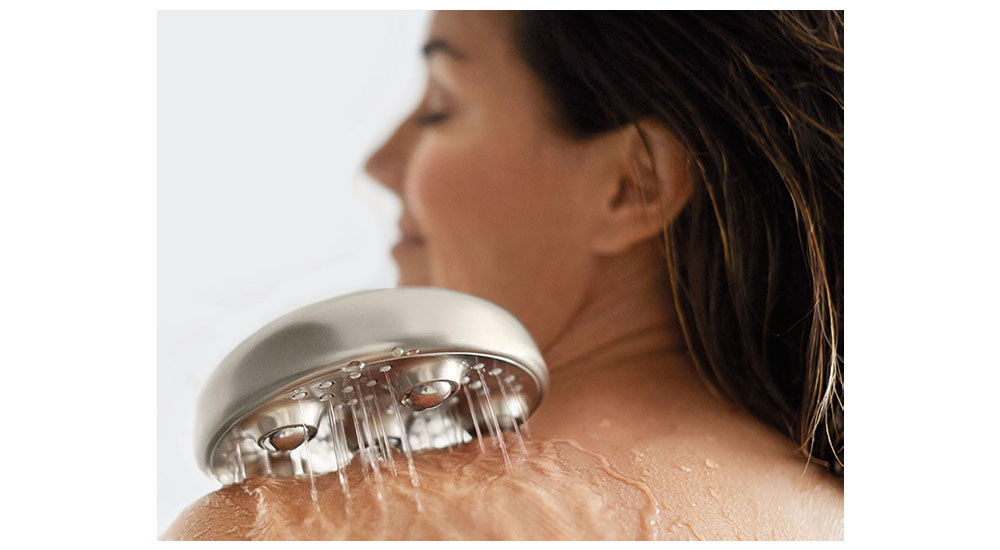
From MOEN, the Hydro Roller Handshower features six massaging rollers that move freely when the water is on or off. It’s paired with a three-setting rainshower fitting. moen.com
While the shower experience is fully focused on the physical, thanks to technology, operating the shower is becoming more intuitive. Digital interfaces allow users to program settings, control water consumption and set timers. Smart sensors ensure water turns off automatically when not in use, promoting sustainability. Thermostatic controls maintain consistent water temperature, eliminating sudden bursts of cold or heat. Touchless panels and voice-activated systems offer effortless operation, transforming the spa shower into an intuitive, personalized retreat.
Saunas & Steam Showers
Saunas and steam showers are increasingly popular features in modern spa bathrooms, offering relaxation and wellness benefits within the comfort of the home. While both promote relaxation, improve circulation and cleanse the skin, the experience differs: saunas invigorate with dry heat, while steam showers soothe with humidity.
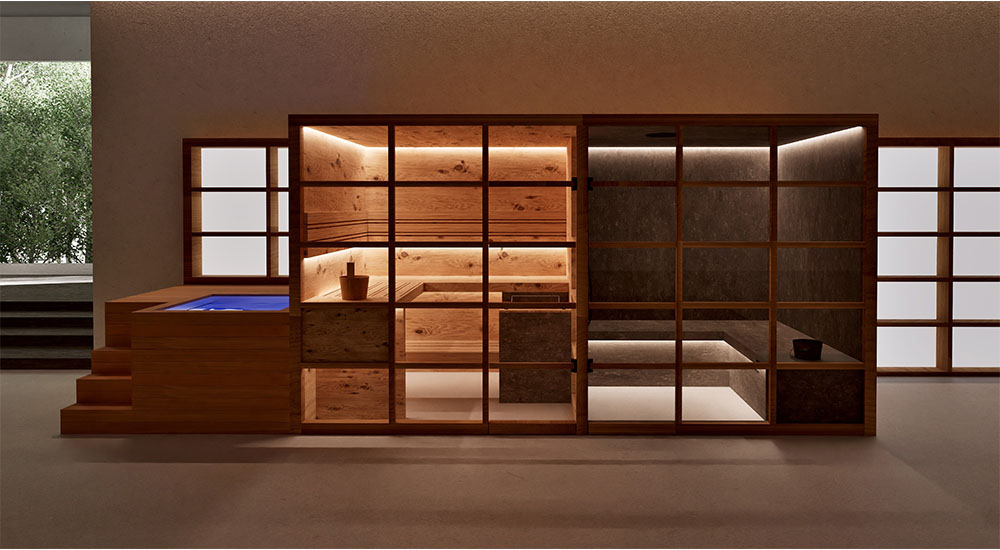
Designed by Marco Williams Fagioli for EFFE, the Petra SH is a modular system that includes a sauna enclosure and a hammam cabin. It’s constructed of fragrant Swiss pine and an antibacterial, mineral-based recycled material that has been digitally textured to achieve an organic effect. effe.it
A home sauna, typically constructed from wood such as cedar or hemlock, requires a dedicated, well-ventilated space. Saunas create a dry, radiant heat environment, typically with temperatures between 150°F and 195°F, promoting deep sweating and muscle relaxation. Saunas need specialized electrical wiring to power the heater. Proper insulation, moisture barriers and sometimes drainage are essential to ensure safety and performance.
A sauna serves as a statement design feature, bringing a rustic, inviting warmth to a spa bathroom with its wooden aesthetics and dedicated seating area. It often evokes a sense of Scandinavian luxury.
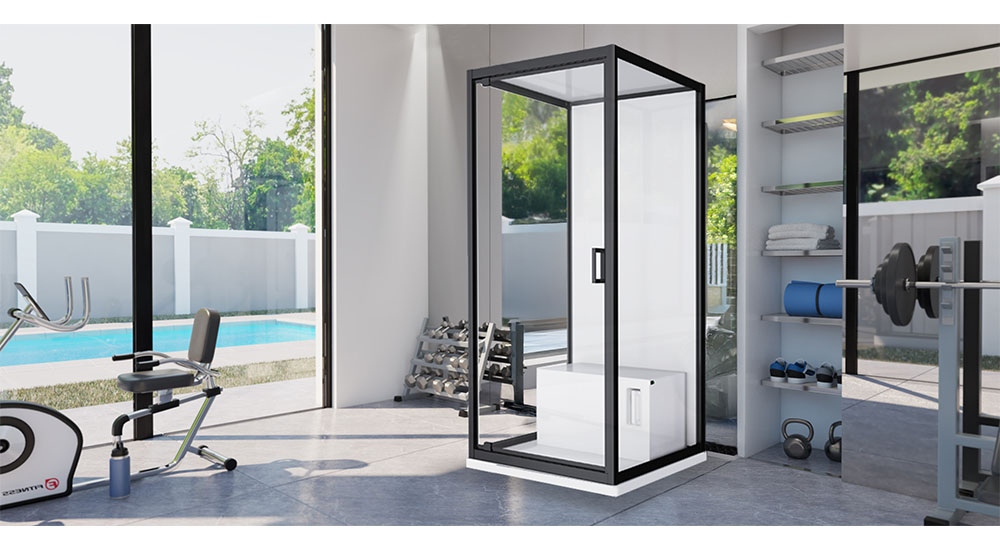
The SteamPod Stand-Alone Steam Room by MR STEAM is a portable enclosure designed for indoor or outdoor use. It has a built-in 120v steam generator and plugs into a standard wall outlet. Because the unit has a fillable water reservoir, it requires no plumbed water or drain lines. mrsteam.com
In contrast, steam showers are often integrated into the bathroom’s shower space. With glass enclosures and minimal visual interruption, they can make the bathroom feel open and contemporary, complementing a variety of design styles. Steam showers envelop users in moist heat at lower temperatures, usually between 110°F and 120°F, which can be gentler for those sensitive to high heat. Steam showers require a steam generator, waterproof enclosures and robust sealing to prevent moisture escape. Specialized plumbing is needed for steam generation and drainage, and electrical connections must meet safety codes for wet environments.
Designing Tranquility
Synthesizing these fixtures into a floor plan that supports the spa ambiance can require bending conventional design formulas.
Architect Erla Dögg Ingjaldsdóttir, AIA, IIDA, owner, principal and general contractor at Minarc, a Santa Monica, Cal.-based firm, explained their methodology. “We approach every bathroom design with the goal of creating a zen-like retreat. We often design the space so that the tub is located away from the typical ‘bathroom zone.’ Instead, we look for a place that feels more connected to natural or soothing light and open air to create a relaxing atmosphere. Sometimes this means positioning it in the primary bedroom, or creating a semi-enclosed area that opens to the outdoors. We treat the tub like a sculptural centerpiece, not something simply squeezed between plumbing lines.”
She notes that when a bathtub shares a small space with a toilet, it diminishes both the aesthetic and the experience. “It’s hard to feel like you’re escaping or indulging when you’re a few feet away from a toilet bowl.” Separating the two fixtures doesn’t just create a more hygienic environment, it also helps create a more luxurious and emotionally restorative experience.
Safety in the Spa Bathroom
Visit a reputable day spa, and you’ll likely be presented with a liability release, a legal document that informs clients about potential risks of certain treatments and encourages them to be mindful of their health.
While designers aren’t doctors, being able to inform clients about some of the basic medical concerns pursuant to spa features can enhance their authority.
For heat-based therapies, an abundance of research suggests that using a sauna is generally safe and potentially good for the body. Dr. Wen-Chih Wu, MPH, director of the Brown University Cardiovascular Wellness and Prevention Center, said, “In general, it is safe for most patients with heart disease to enjoy a sauna as long as their condition is stable, and they follow recommended precautions,” which include:
– Not exceeding 212ºF or 20% humidity
– Limit time in the sauna to no more than 20 minutes
– Allow for a cooling off period after the sauna, but refrain from using ice water or a cold pool if you have heart disease. The sudden stress can cause arrhythmia or other blood pressure or heart rate instability.
Concerns are similar for cold-based therapies. Cold water causes the blood vessels to constrict, which raises blood pressure and forces the heart to work harder. According to the American Heart Association, cold plunging can cause a sudden increase in breathing, heart rate and blood pressure. This can be dangerous for people with heart conditions, hypertension or those at risk for stroke.
While ice baths can ease everyday aches and pains, they aren’t the right choice for persons dealing with injuries like a fracture, a tendon or ligament tear, or another injury.
A Look Ahead
So what’s the future of the spa bathroom? The concept is evolving into a “medspa” environment, with advancements moving beyond general wellness to embrace medical diagnostic functions. Smart mirrors equipped with cameras may be able to detect facial blood flow, estimating blood pressure and potentially identifying risks for heart attack or stroke. Toilets capable of analyzing stool and urine are also envisioned, alongside therapeutic environments designed for disease diagnosis and management.

